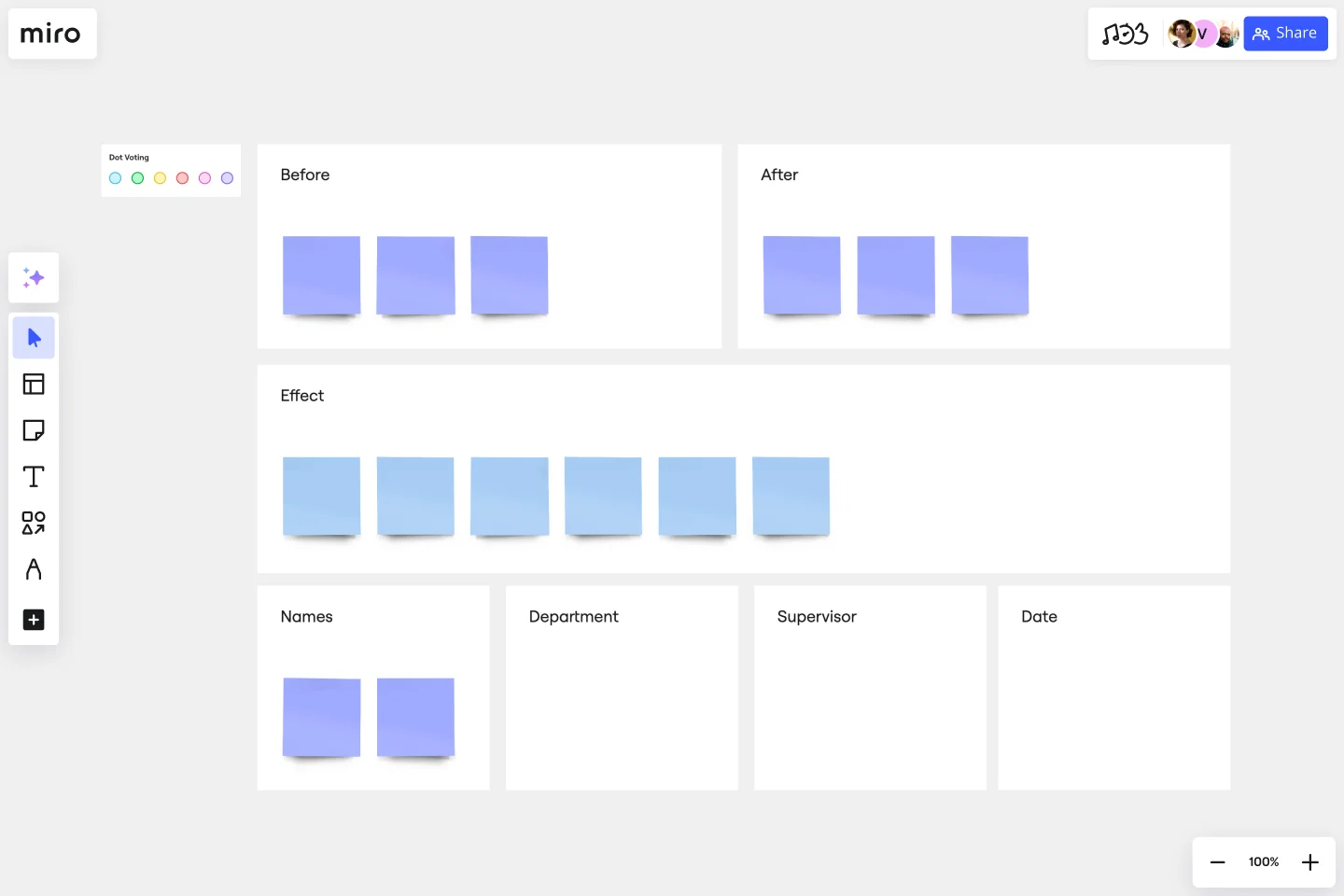Kaizen Report Template
Document and summarize continuous improvement activities across your teams and org.
About the Kaizen Report Template
Kaizen is a business philosophy that originated in Japan. It is based on the continuous improvement of working practices and personal efficiency. In companies that follow this philosophy, all members of the organization—from the CEO down to individual contributors—are expected to participate in kaizen practices.
When is a kaizen report useful?
A kaizen report helps identify gaps and inefficiencies. Under this approach, every employee in the organization is responsible for auditing their processes and understanding what they might have overlooked. In that way, a kaizen report can be an important tool for increasing accountability at all levels of the organization.
Kaizen is more of a general approach then a specific strategy, so people may include different elements in a kaizen report. Overall, though, a kaizen report is useful for the following reasons.
1 - Reduce waste. Kaizen reports help you discover how you can use your personnel and inventory more productively in the future.
2 - Increase employee satisfaction. Under the kaizen approach, everyone from an entry-level employee to the CEO creates kaizen reports. The reports can thereby make everyone feel as though they have a stake in the company and can showcase their impact.
3 - Improve employee retention. Since your employees are more likely to feel engaged, they are also more likely to stay at the company for longer.
4 - Increase your competitiveness. Kaizen reports help you identify gaps and inefficiencies. Once you’ve identified them, you can fix them and make your company even more competitive. This gives you an edge in your market.
5 - Improve customer satisfaction - Regular kaizen reports, and the kaizen approach more broadly, will improve your products. In turn, that will make your customers happier.
6 - Solve problems more efficiency. Kaizen is a solutions-first approach. It empowers you to get at the root of a problem quickly and effectively.
7 - Build better teams. Overall, the kaizen approach will bring your teams closer together. Creating kaizen reports also makes it easier to train new team members, easily bringing them up to speed on processes and desired results.
What do you include in a kaizen report?
A kaizen report doesn’t need to be overly complicated. In its simplest form, it summarizes what the situation was before, which action(s) you took, and what the effect was after. You may wish to include visual elements (photos, diagrams, etc.) to help illustrate the story.
Get started with this template right now.
Project Charter Template
Works best for:
Project Management, Documentation, Strategic Planning
Project managers rely on project charters as a source of truth for the details of a project. Project charters explain the core objectives, scope, team members and more involved in a project. For an organized project management, charters can be useful to align everyone around a shared understanding of the objectives, strategies and deliverables for a project of any scope. This template ensures that you document all aspects of a project so all stakeholders are informed and on the same page. Always know where your project is going, its purpose, and its scope.
Kano Model Template
Works best for:
Desk Research, Product Management, Prioritization
When it comes down to it, a product’s success is determined by the features it offers and the satisfaction it gives to customers. So which features matter most? The Kano model will help you decide. It’s a simple, powerful method for helping you prioritize all your features — by comparing how much satisfaction a feature will deliver to what it will cost to implement. This template lets you easily create a standard Kano model, with two axes (satisfaction and functionality) creating a quadrant with four values: attractive, performance, indifferent, and must-be.
Love Bomb Icebreaker Template
Works best for:
Icebreakers
Encourage team members to show their appreciation for each other using Miro’s free Love Bomb Icebreaker Template. Participants can add words or phrases that show what they appreciate about their colleagues.
UX Research Plan Template
Works best for:
Market Research, Desk Research, User Experience
A research plan communicates the fundamental information that stakeholders need to understand about a user experience research project: who, what, why, and when. The plan ensures everyone is aligned and knows what they must do to make the UX research project a success. Use the research plan to communicate background information about your project; objectives; research methods; the scope of the project, and profiles of the participants. By using a UX research plan, you can achieve stakeholder buy-in, stay on track, and set yourself up for success.
Lean Coffee: Meetings without Agendas
Works best for:
Agile
Lean Coffee: Meetings without Agendas is a collaborative meeting format that fosters open dialogue and emergent topics. Participants suggest discussion topics, vote on them, and engage in time-boxed conversations. This template provides a structured framework for facilitating Lean Coffee sessions, enabling teams to prioritize topics, share insights, and make decisions collectively. By promoting inclusivity and adaptability, Lean Coffee empowers teams to address issues efficiently and drive continuous improvement.
PESTLE Analysis Template
Works best for:
Ideation, Strategic Planning, Business Management
Want to keep your company secure and performing soundly? You have to first know how you’ll be affected by outside elements and factors — especially those that are political, economic, social, technological, legal and environmental in nature. A PESTLE Analysis helps you identify them and prepare for them. With this easy-to-use template, you can conduct a PESTLE Analysis, then use the results to shape your strategic planning, budget allocation, marketing, product updates, and organizational change initiatives.
